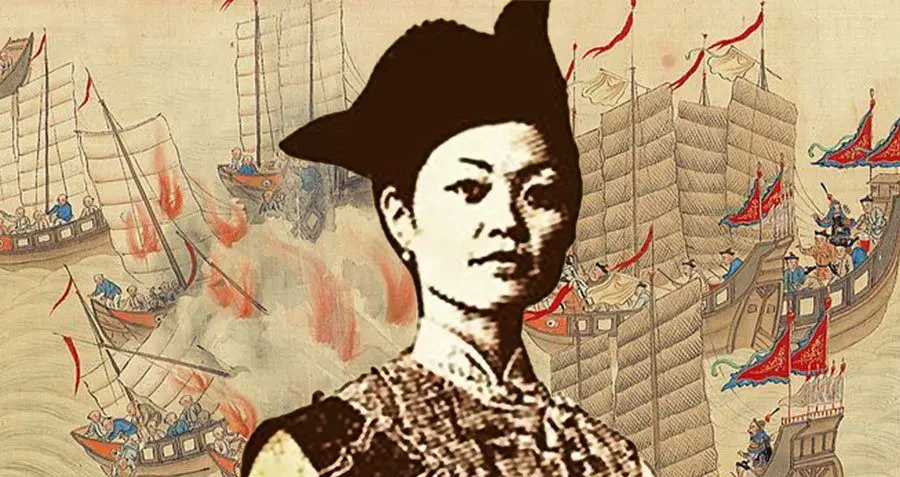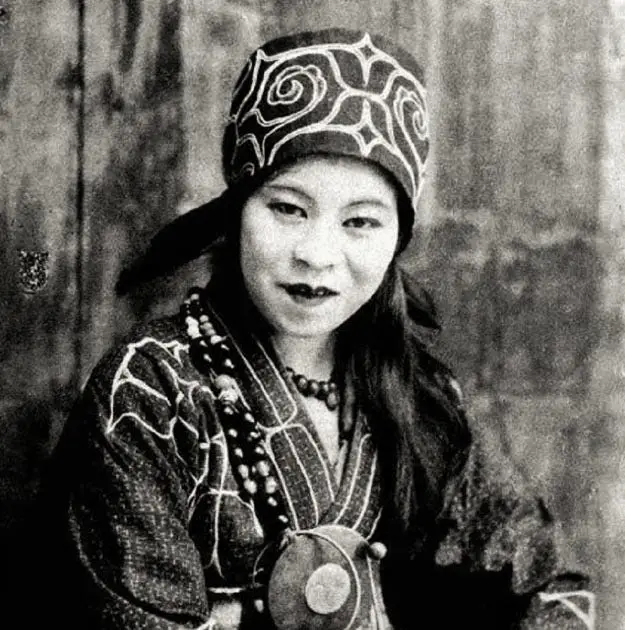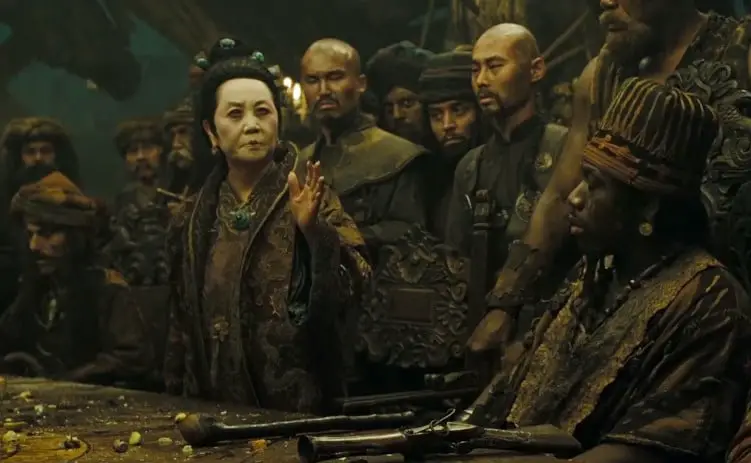When it comes to renowned pirates, we often think about Blackbeard or Captain Jack Sparrow. But now, we can temporarily forget these names because the most successful pirate captain of all time was a Chinese woman named Ching Shih.
“She was absolutely, unquestionably the greatest pirate who ever lived,” says Laura Sook Duncombe, author of Pirate Women: The Princesses, Prostitutes, and Privateers Who Ruled the Seven Seas.
The Rise of Ching Shih: From Prostitute To Pirate Queen

Ching Shih, also known as Cheng I Sao, was an extraordinary pirate who broke gender norms and became the most successful pirate ever.
Ching Shih grew up poor in Canton, China, in 1785 and worked as a prostitute to make ends meet. But her life took a surprising turn when she married Zheng Yi, a notorious pirate captain who led the feared Red Flag Fleet. It’s a bit like a twisted Cinderella story.
The story goes that Cheng sought out Ching Shih as his bride because of her reputation as a clever businesswoman. It’s said that Ching Shih used her knowledge gained from being a prostitute to gain power over her wealthy and influential clients.
There are no primary Chinese sources to confirm this tale, but Ching Shih’s financial skills became evident throughout her pirate career.
Under Cheng’s guidance, Ching Shih quickly adapted to life at sea and became an active pirate commander in the fleet. She took part in raids, contributed to strategic planning, and had a say in decision-making.
Tragically, on November 16, 1807, Cheng Yi fell into the sea during a storm and passed away at the age of 42.
After his death, Ching Shih, his ambitious young woman, managed to take over the entire pirate operation, becoming the new leader herself.
The Reign Of Ching Shih: Leadership And Dominance

Under Ching Shih’s clever leadership, the Red Flag Fleet had an extensive reach. From small fishing vessels to large merchant ships, none could escape her grasp.
But it wasn’t just about stealing riches. Ching Shih established a sophisticated spy network in coastal towns to ensure that her fleet always stayed one step ahead of their enemies.
The Red Flag Fleet grew to dominate all major pirate groups in China, reaching its peak with 1,800 ships and 80,000 pirates under their command.
As a female captain, Ching Shih made herself twice as feared (and twice as ruthless) as any male leader.
She had a strict code of piracy, and anyone who broke it by being abusive or unfaithful to their spouse, or by keeping more than their fair share of loot, faced a swift and brutal punishment: their head chopped off with an axe and their body dumped into the ocean, no questions asked.
Ching Shih also ensured that no women were mistreated by her crew. Female prisoners were ordered to be set free unharmed, unless a pirate wanted to marry one. In that case, the pirate had to treat his wife-to-be with respect. After all, nobody understood the value of a pirate’s wife better than Ching Shih.
Ching Shih’s Struggle Against Imperial Naval Forces
Under Ching Shih’s leadership, her pirate fleet conducted numerous raids and pillaged hundreds of coastal towns, amassing a substantial fortune in money and valuables. She never lost a battle.

The Chinese government recognized the need to put an end to her reign and decided to take decisive military action. They assembled an Imperial fleet with the intention of confronting the Red Flag Fleet.
In a bold move, Ching Shih sailed out to meet them directly and effortlessly defeated their forces, capturing sixty Imperial ships in the process.
In desperation, Chinese officials turned their attention to “foreign barbarians”, hoping to secure assistance against Ching Shih and the Pirate Confederation.
On September 5, 1809, Zheng Yi Sao seized the brig belonging to Antonio Botelho Homen, the Portuguese governor of Timor. Subsequently, on November 4, the Portuguese dispatched three ships and a brig to engage Zheng Yi Sao in Lantau.
On the 8th, a fleet of six Portuguese ships, led by artillery captain José Pinto Alcoforado de Azevedo e Sousa, blockaded Zheng Yi Sao within Tung Chung Bay.

The pirates made various attempts to counterattack and break the blockade, but were unsuccessful due to unfavorable winds.
On the 23rd, the pirates managed to capture one ship from the provincial fleet, and tragically killed all 74 men aboard. The situation reached a stalemate between the pirates and the combined Sino-Portuguese fleet.
Growing frustrated with the lack of progress, Provincial Commander Sun Quanmou decided to convert 43 of his ships into fire ships on the 28th and set them adrift towards the pirates in Tung Chung Bay.
However, the pirates cleverly diverted the fireships, towed them ashore, and extinguished the fires. They even broke them up to use as firewood. Then, on the 29th, taking advantage of the wind, Zheng Yi successfully broke through the blockade and escaped into the South China Sea.
In the process, the provincial fleet lost 3 ships and at least 74 men, while the pirates suffered the loss of 40 men but managed to keep all their ships intact.
The End Of Ching Shih’s Era

Eventually, the government decided to try a different strategy: offering a peace treaty rather than continuing to attack. The government sat her down and were like “Ching Shih. Brah.
You need to stop with the raiding and the pillaging. What do you say you just pack it all in, give the treasure back, and we’ll stop trying to kill you?” In fact, Ching Shih, who had earned that treasure, decided to share it fairly among her fellow pirates instead of giving it all back.
Ching Shih went to negotiate with the Governor of her hometown, Canton. She proposed a deal: retire comfortably, pardon most of her crew (which was huge, about 17,000 people), let her keep all the stuff she’d stolen, and give her a nice pension if she stopped pirating.
She agreed to the deal and even opened a fancy casino as a side business in retirement. The casino also doubled as a brothel because some things never change.
Ching Shih was given the title of “Lady by Imperial Decree” and retired from piracy to successfully run her gambling house until she passed away in 1844, at the age of 69. She died an extremely wealthy noblewoman, but she lived as an invincible pirate queen.


